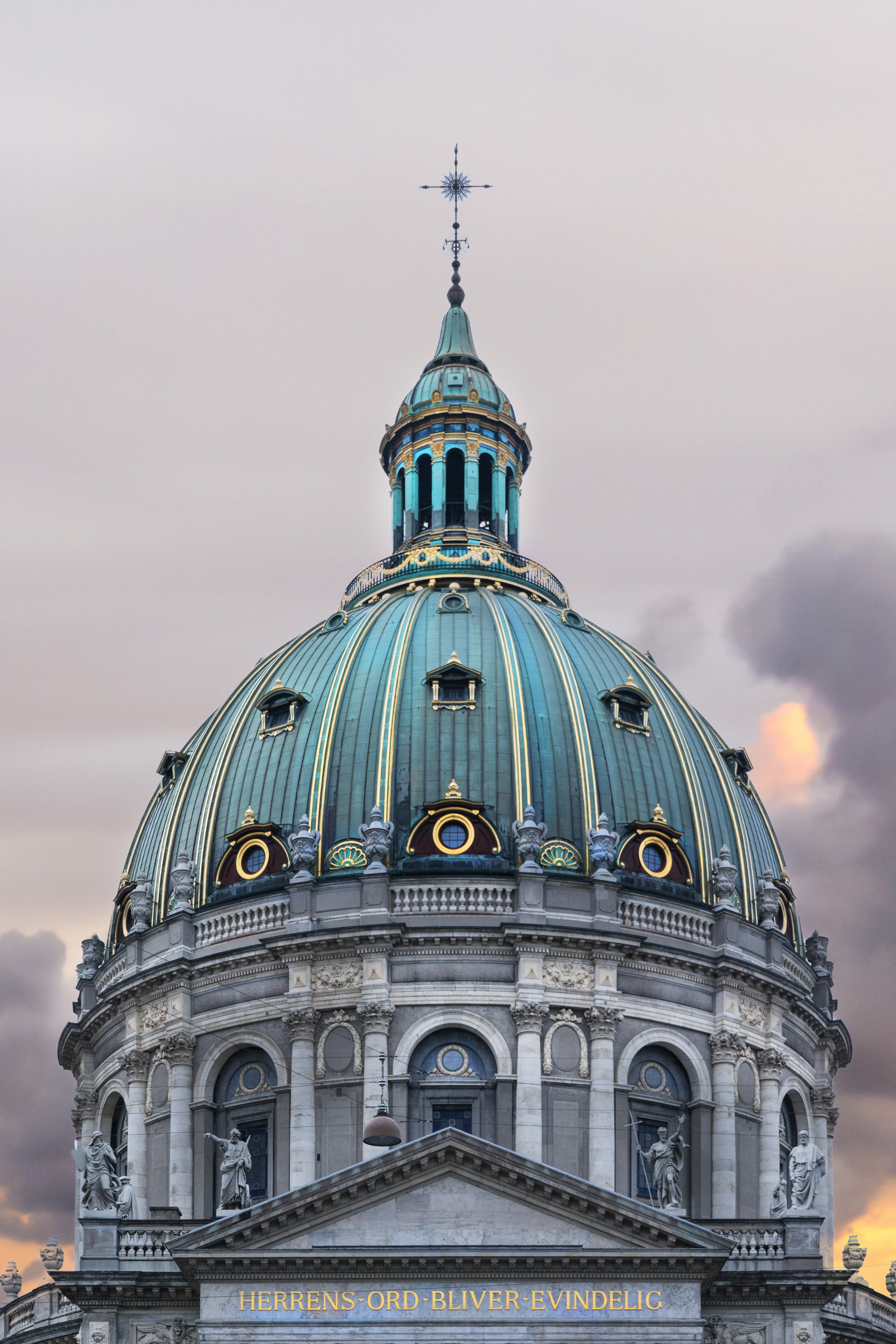The Marble Church, officially known as Frederikskirken, opened in 1894. But the first foundation stone was laid back in 1749 when King Frederik V established Frederiksstaden with Amalienborg Palace. At that time, the district’s architect, Niels Eigtved, planned to build a Rococo church. When Eigtved died in 1754, the project was handed over to Lauritz de Thurah, and in 1756 the French architect Nicolas Henri Jardin was called in to take over. He changed the plans to a Classical church in marble, which also made the project so expensive that J.F. Struensee halted its construction in 1770.
The then 19-meter-high building stood as an unfinished ruin for nearly 100 years. Where the mighty regent of Denmark had failed, in stepped the industrial magnate C. F. Tietgen. He purchased the ruin from the Danish Ministry of Finance in 1874 with a commitment to complete the church, and in 1894 it was inaugurated.
Architect Ferdinand Meldahl combined the existing walls of Norwegian gray flame Gjellebæk marble (thus the name of the church) with a Roman Baroque dome strongly inspired by St. Peter’s Basilica. The original marble walls were completed with brickwork, while building details and other ornamentation was carved from sandstone and limestone. The interiors were also completed in a more economical manner with stucco and painted decorations. Nonetheless, the finished product is an impressively cohesive building whose greatest asset is the grand dome with an interior diameter of 30 meters.
Tietgen not only envisioned the church as a memorial to the Danish royals, but also as a monument to the pastor N. F. S. Grundtvig and his philosophy. Therefore, a statue of Grundtvig was erected at the entrance to the church. The church is surrounded by statues of Biblical figures, as well as prominent figures from Danish and international church history.
In 1999, the church facade was cleaned and restored under the guidance of Erik Møllers Tegnestue A/S.
